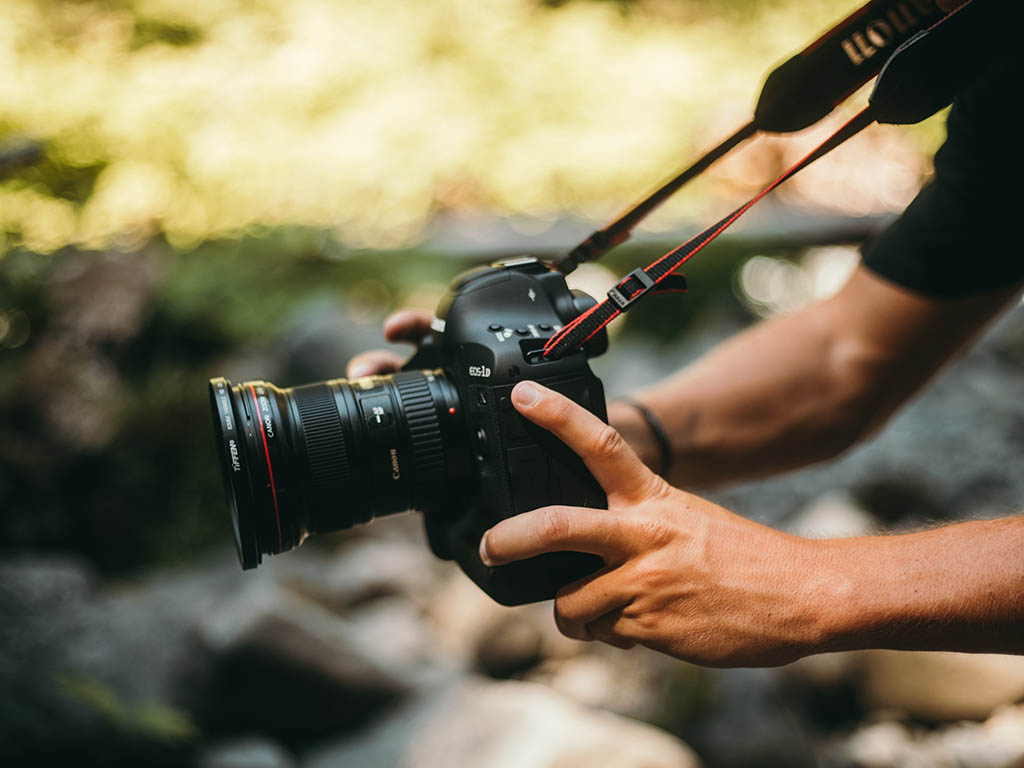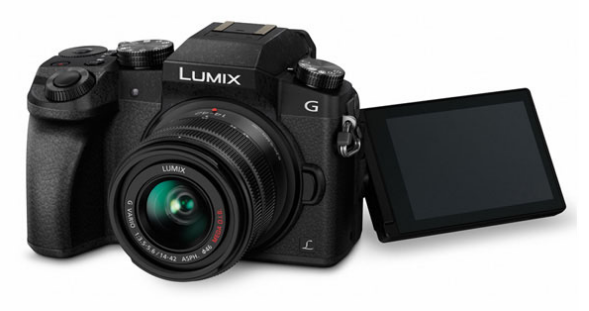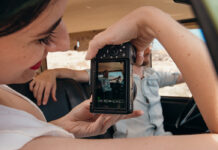
In the last few years I have found myself shooting more and more video as well as photography. It actually came about with the realization that I already have the necessary equipment, and I might as well use it to it’s full capacity. Video has become a process that I really enjoy, despite the fact that it is a more complicated and laborious undertaking. I’m the kind of person who genuinely feels more alive when I’m learning something new, so I find shooting video all the more engaging because of that complexity.
Today I want to share with you some of the best cameras I’ve used to capture great video.
But before I go any further I want to reiterate a point that I’ve made many times in the past:
It ain’t what you’ve got, it’s how you use it
Don’t allow the limitations of your equipment to hold you back. Use those limitations as springboards for your creativity. No stabilizer? Embrace a handheld style instead and use the camera strap to steady camera instead (as in the photo above). No shotgun mic? Shoot a music video.
Don’t wait for the perfect moment to create something—just go and make it happen!
Upping your video game
If you have reached a point in your journey where you ready to make an investment to upgrade your video game, I’m going to show you three awesome cameras to help you do that.
I’m taking 4K capture as a baseline for all of my recommendations today, as well as something called log shooting, which is analogous to shooting RAW format in photography because it gives you more leeway to post-process your footage in the edit. This is very important to creatives like filmmakers and music video shooters. All three cameras also have touchscreens. It might not surprise you to discover that they are all mirrorless cameras too, as DSLRs seem to be primarily geared towards still shooters nowadays.
Fujifilm X-T3
I was lucky enough to get the chance to review the Fujifilm X-T3 recently, and I was very impressed with the video features that Fujifilm has packed into this beautifully designed unit.

The X-T3 offers lots of control over video settings, including multiple file formats, frame-rates and bit rates, all of which allows you to fine tune your image quality and file size. You also have lots of ways to creatively tweak your image, whether you want to shoot with a specific color look or in classic monochrome black-and-white. Fujifilm takes great pride in offering a host of baked in color presets which work for both video and stills, and this lets you capture something stylish right there in-camera and saves you the need to color grade afterwards.
The hardcore video buffs are going to love the fact that your can record at a bit rate of 400Mbps and in 10 bit color. These kinds of specs put this camera in the top tier of what’s available right now for shooting video in the mirrorless category.
Read my full review of the Fujifilm X-T3
Sony a7 III
The Sony a7 III is one of the best options on the market when it comes to shooting top quality video and stills on the same camera. Professional photographers generally insist on shooting with a full-frame camera, meaning one with a big sensor that gives you a bigger file and better low-light performance. Bigger files mean you can make bigger prints, and pros like to give their clients the option to make large-format prints if required.

Sony is known as a leader in the mirrorless video field, and also makes the impressive a6600, another camera that is highly regarded by serious video shooters. The advantage of the a7 III over the X-T3, aside from the sensor size, is the fact that it has built-in image stabilization, which is a major plus when you need to shoot hand-held. On the downside, the a7 III shoots at a maximum 100Mbps and only offers 8-bit color depth.
I recently decided to switch from Canon to Sony because of the a7 III and the fact that it would allow me to confidently service both my video and photography clients.
Video shooters often like to use a monitor when they are shooting so that they don’t need to keep checking the screen on the back of the camera. Sony has a really great app that allows you to connect to your camera and get a live view right there on your phone, and also change your settings if needed. This is a nice alternative to using a dedicated monitor.
Panasonic Lumix G7
I wanted to include the Panasonic Lumix G7 as a less expensive alternative to the XT-3 and the a7 III, but one that nevertheless offers excellent video features. Panasonic has a fantastic reputation among video shooters who revere the GH5.

What you lose with the G7 is the ability to shoot full HD at 120 frames per second for sweet slo-mos. You’ll also discover that the bit rates are quite a bit lower. One of the major pluses however is the swivel screen. Panasonic have absolutely nailed this feature and it makes video shooters very happy indeed because it is so versatile. Unlike the X-T3 and the a7 III screens which only tilt up and down, the G7 screen swivels all the way to the forward facing position, which is great for vlogging.
The G7 carries a Micro Four Thirds sensor and the advantage of this system is that you get a large range of lenses to choose from. There are comparatively fewer E-Mount full-frame lenses available for the a7 III, for example.
I hope I’ve given you a good overview of some the options out there to help you to bring your creative visions to life, but as always if you have any questions feel free to hit me up in the comments section.
Be sure to check out all the full range of amazing mirrorless cameras available at BestBuy.ca



